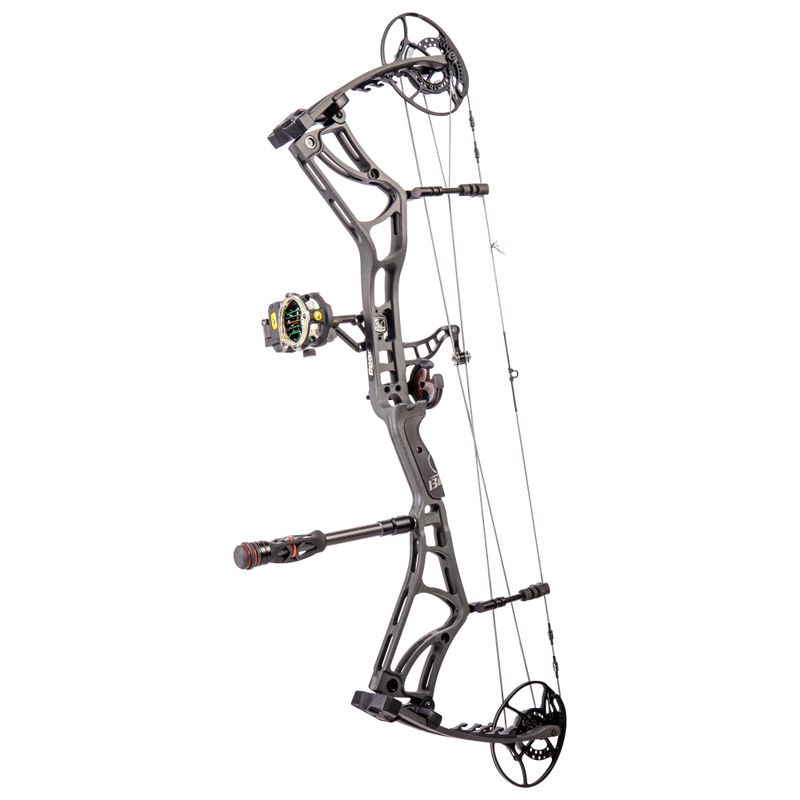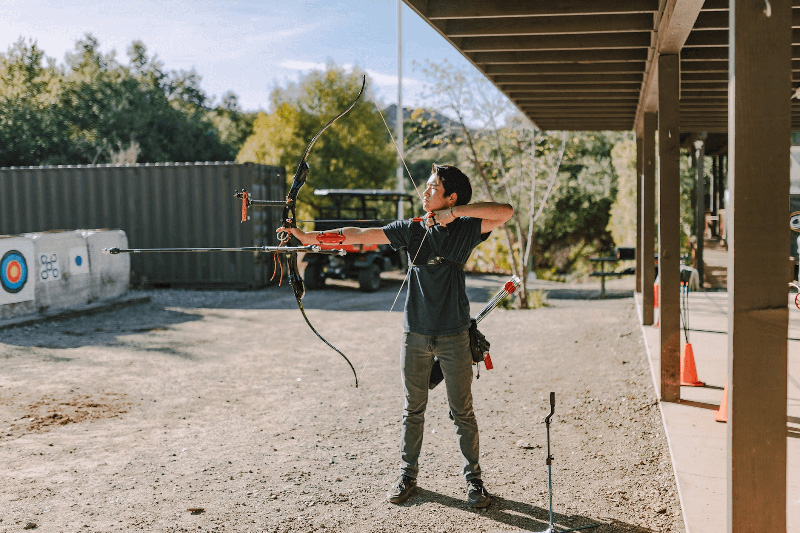Discovering Archery Stabilizers: Locating the Perfect Fit
The Ultimate Guide to Selecting the Right Archery Stabilizer for Improved Precision
Among the various devices offered, an archery stabilizer plays a substantial function in improving accuracy. In this comprehensive overview, we will certainly check out the crucial elements to take into consideration when choosing an archery stabilizer for enhanced precision. Whether you are an experienced archer looking to update your devices or a beginner looking for support, join us on this journey as we decipher the secrets to picking the best archery stabilizer.
Length: Finding the Optimum Stabilizer Length
Identifying the suitable stabilizer length is essential when selecting an archery stabilizer for optimum efficiency. The size of a stabilizer straight impacts the balance, stability, and precision of the bow. A stabilizer that is too long can make the bow really feel top-heavy and tough to manage, while a stabilizer that is also short might not offer adequate security and dampening of vibrations. Locating the best size requires taking into consideration elements such as the archer's shooting design, bow weight, and personal choice.
A longer stabilizer, usually varying from 8 to 12 inches, can provide higher security and lower bow torque. This is especially helpful for archers who fire with a high draw weight or those that have a tendency to torque the bow throughout the shot. The included size helps to disperse the weight evenly and counterbalance any type of torque or motion.
On the various other hand, a much shorter stabilizer, usually between 4 to 7 inches, provides a lot more ability to move and quicker response. It is favored by archers who shoot with a lower draw weight or those who need even more mobility, such as hunters or 3D shooters. The shorter length permits for easier motion with limited rooms and faster adjustments.
Ultimately, the ideal stabilizer length is a matter of personal choice and shooting design. It is recommended to try out various sizes and observe the results on security and accuracy. Consulting with experienced archers or professionals can additionally provide useful understandings and recommendations.
Weight: Establishing the Appropriate Stabilizer Weight
After thinking about the ideal stabilizer size, the next vital variable to take into consideration when choosing an archery stabilizer is figuring out the ideal stabilizer weight - archery stabilizer. The weight of the stabilizer plays an important role in enhancing accuracy and security throughout the shot
The weight of the stabilizer influences the balance and control of the bow. A much heavier stabilizer can offer enhanced stability and control, specifically for shooters with a propensity for unstable hands or irregular shots. It aids to soak up the vibrations and recoil generated by the bow, minimizing torque and reducing the impact on the arrow's trip.
On the various other hand, a lighter stabilizer enables for a quicker and a lot more responsive bow. It can be advantageous for shooters that prioritize ability to move and rate over stability. Lighter stabilizers additionally lower tiredness during lengthy shooting sessions or competitions.
To identify the appropriate stabilizer weight for your needs, it is crucial to consider your shooting style, physical strength, and bow setup. Trying out various weights and observing the influence on your shooting efficiency is crucial to finding the excellent equilibrium.
Eventually, the optimum stabilizer weight will certainly differ for each specific archer. It is suggested to begin with a moderate weight and make changes based upon personal choice and shooting outcomes. Bear in mind, the goal is to attain a steady and controlled shot, while also keeping comfort and simplicity of usage.
Materials: Picking the Right Products for Resilience and Efficiency
When selecting an archery stabilizer, it is critical to thoroughly take into consideration the materials made use of in its construction to make sure durability and enhance efficiency. The option of products can substantially impact the general top quality and effectiveness of the stabilizer.
One of the most typically utilized materials for stabilizers is carbon fiber. Additionally, carbon fiber stabilizers are resistant to temperature changes and are less most likely to warp or bend over time.
An additional preferred product for stabilizers is light weight aluminum. Light weight aluminum stabilizers are understood for their durability and rigidity. They provide excellent dampening abilities, minimizing the amount of shock and vibration transferred to the shooter's hand. Aluminum stabilizers also offer a large range of customization options, permitting archers to readjust the weight and size to suit their preferences.
Some stabilizers are built using a combination of materials. For example, a Our site stabilizer might have a carbon fiber core covered in a light weight aluminum shell. This hybrid layout integrates the most effective qualities of both products, offering optimum stability, resilience, and performance.
Layout: Understanding the Various Stabilizer Styles and Their Results
Taking into consideration the products made use of in archery stabilizers, it is essential to now look into the different styles of stabilizers and their respective effects. The design of an archery stabilizer plays a critical duty in enhancing accuracy and reducing vibration throughout the shot. There are a number of various designs readily available on the market, each with its own one-of-a-kind features.

An additional prominent style is the side bar stabilizer. This design entails connecting a short pole to the side of the bow, alongside the main lengthy rod. Side bar stabilizers help in counteracting the weight of accessories, such as views or quivers, and provide added stability to the bow.
Some stabilizers come with flexible weights. These stabilizers allow archers to make improvements the balance and feeling of their bows by adding or getting rid of weights. This feature is particularly beneficial for archers who favor a certain weight distribution or intend to trying out different arrangements.
Additionally, some stabilizers include moistening modern technology to lessen vibration and sound. These stabilizers typically have integrated dampeners or use products that absorb vibrations, causing a smoother and quieter shot.

Devices: Discovering Added Devices for Boosted Security
To further improve stability in archery, extra devices can be used. These devices are made to operate in conjunction with the archery stabilizer to offer an even greater level of stability and accuracy. One such accessory is the V-bar or the side stabilizer install. This accessory enables for the accessory of a second stabilizer, which assists to stabilize the bow and minimize torque. By distributing the weight evenly on both sides of the bow, the V-bar helps to Check This Out reduce any kind of undesirable activity during the shot.
Another accessory that can boost security is a bow sling. A bow sling is a band that affixes to the bow and allows the archer to maintain a relaxed grasp on the bow take care of without the concern of dropping it (archery stabilizer). This loosened up grasp assists to minimize muscle mass tension and allows for a more regular and secure shot
Additionally, a stabilizer weight system can be used to make improvements the equilibrium and stability of the bow. These weight systems usually include tiny weights that can be added or removed from the stabilizer to readjust the balance factor of the bow. By discovering the ideal equilibrium factor, archers can achieve a more exact and steady shot.
Verdict
In verdict, selecting the ideal archery stabilizer entails thinking about aspects such as size, weight, materials, style, and added accessories. The ideal stabilizer size and weight will depend on private choices and shooting design.
Figuring out the perfect stabilizer length is critical when selecting an archery stabilizer for ideal efficiency. A stabilizer that is also long can make the bow feel difficult and top-heavy to regulate, while a stabilizer that is as well short might not supply adequate security and dampening of resonances - archery stabilizer.Taking into account the materials utilized in archery stabilizers, it is crucial to currently dive right into the various designs of stabilizers and their respective effects. Side bar stabilizers Read Full Report help in reversing the weight of accessories, such as quivers or views, and give added security to the bow
These weight systems usually are composed of tiny weights that can be included or eliminated from the stabilizer to change the balance point of the bow.